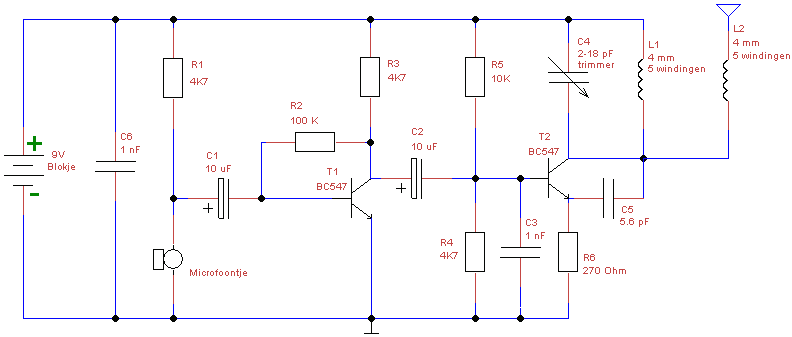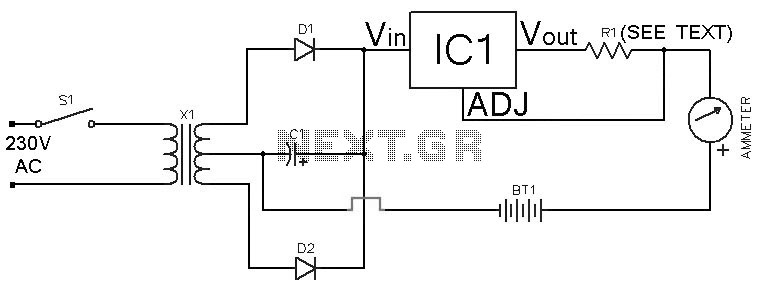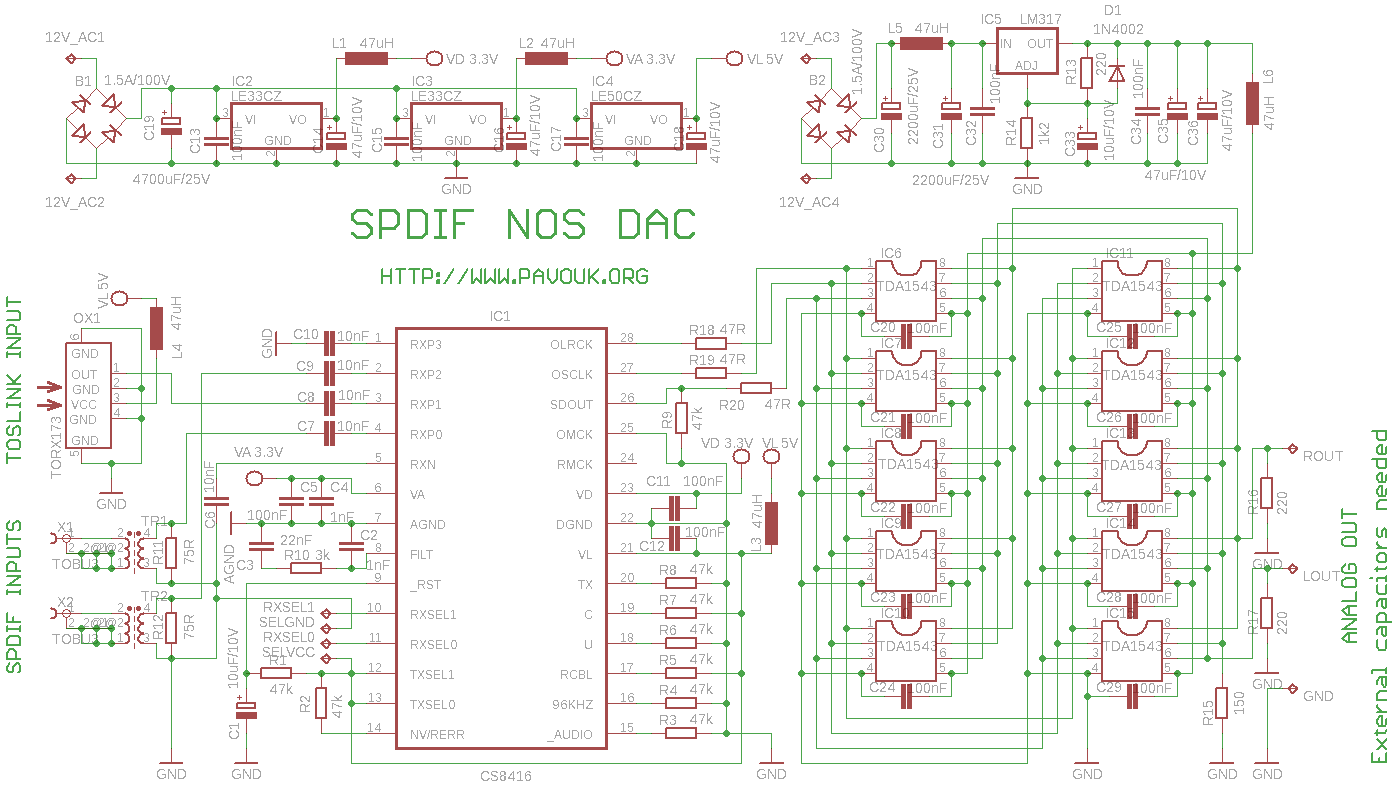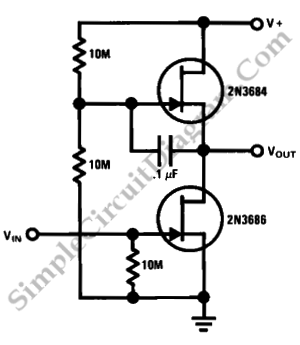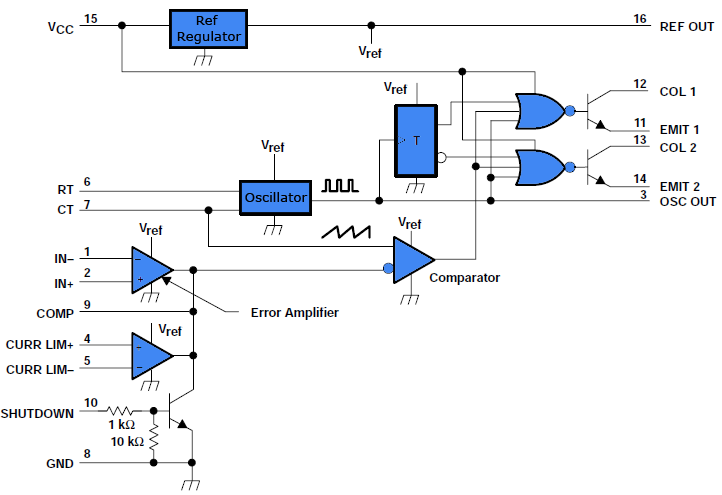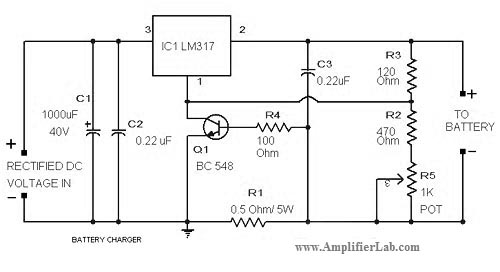
Simple IR audio link
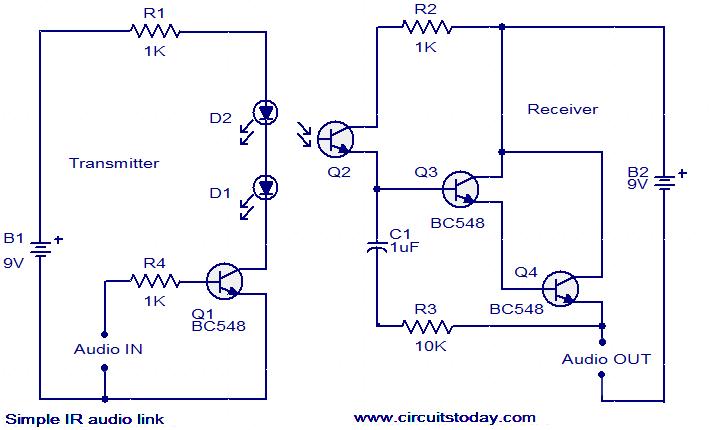
This circuit features a simple infrared (IR) audio link designed to transmit audio signals over a distance of up to 4 meters. The audio signal to be transmitted is applied to the base of transistor Q1 through resistor R4. Transistor Q1 activates the IR transmitting diodes D1 and D2, modulating the audio input into IR signals for transmission. The emitted IR signals are detected by phototransistor Q2, which responds to changes in the emitter voltage based on the sound modulation. The output from Q2 is further amplified by transistors Q3 and Q4, enabling the driving of a speaker or headphone. Capacitor C1 and resistor R3 form a filter to mitigate interference from stray IR signals.
The circuit operates by converting audio signals into infrared light pulses, which are then transmitted wirelessly. The modulation of the audio signal onto the IR light is accomplished through the switching action of Q1, which controls the intensity of the IR LEDs based on the input audio levels. The choice of R4 is critical, as it sets the base current for Q1, directly influencing the modulation depth and the efficiency of the transmission.
Upon reception, phototransistor Q2 detects the modulated IR signals. The output voltage from Q2 varies with the intensity of the incoming IR light, which corresponds to the audio signal's amplitude. This voltage change is then amplified by transistors Q3 and Q4, which are configured in a common-emitter arrangement to provide sufficient gain for driving output devices like speakers or headphones.
C1 and R3 serve a dual purpose in the circuit. C1 acts as a coupling capacitor, blocking any DC component and allowing only the AC audio signal to pass through to the amplifier stage. R3, in conjunction with C1, forms a low-pass filter that helps to smooth out any high-frequency noise that may be present, ensuring a cleaner audio output.
Overall, this IR audio link circuit is a practical solution for wireless audio transmission, effectively utilizing basic electronic components to achieve reliable performance over a short range. Proper component selection and configuration are essential for optimal functionality and signal integrity.Here is a simple IR audio link that can be used to transmit audio signals up to 4 meters. The signal to be transmitted is applied to the base of Q1 via resistor R4. The transistor Q1 drives the IR transmitting diodes D1 and D2. The audio input will be modulated to the IR signals transmitted. The transmitted IR signals will be picked by the photo tra nsistor Q2. The emitter voltage of the transistor Q2 will change according to the sound modulated to the IR signal. The transistors Q3 and Q4 amplifies this signal to drive the speaker or headphone. C1 and R3 forms a filter to avoid interference from stray IR signals. 🔗 External reference
The circuit operates by converting audio signals into infrared light pulses, which are then transmitted wirelessly. The modulation of the audio signal onto the IR light is accomplished through the switching action of Q1, which controls the intensity of the IR LEDs based on the input audio levels. The choice of R4 is critical, as it sets the base current for Q1, directly influencing the modulation depth and the efficiency of the transmission.
Upon reception, phototransistor Q2 detects the modulated IR signals. The output voltage from Q2 varies with the intensity of the incoming IR light, which corresponds to the audio signal's amplitude. This voltage change is then amplified by transistors Q3 and Q4, which are configured in a common-emitter arrangement to provide sufficient gain for driving output devices like speakers or headphones.
C1 and R3 serve a dual purpose in the circuit. C1 acts as a coupling capacitor, blocking any DC component and allowing only the AC audio signal to pass through to the amplifier stage. R3, in conjunction with C1, forms a low-pass filter that helps to smooth out any high-frequency noise that may be present, ensuring a cleaner audio output.
Overall, this IR audio link circuit is a practical solution for wireless audio transmission, effectively utilizing basic electronic components to achieve reliable performance over a short range. Proper component selection and configuration are essential for optimal functionality and signal integrity.Here is a simple IR audio link that can be used to transmit audio signals up to 4 meters. The signal to be transmitted is applied to the base of Q1 via resistor R4. The transistor Q1 drives the IR transmitting diodes D1 and D2. The audio input will be modulated to the IR signals transmitted. The transmitted IR signals will be picked by the photo tra nsistor Q2. The emitter voltage of the transistor Q2 will change according to the sound modulated to the IR signal. The transistors Q3 and Q4 amplifies this signal to drive the speaker or headphone. C1 and R3 forms a filter to avoid interference from stray IR signals. 🔗 External reference
